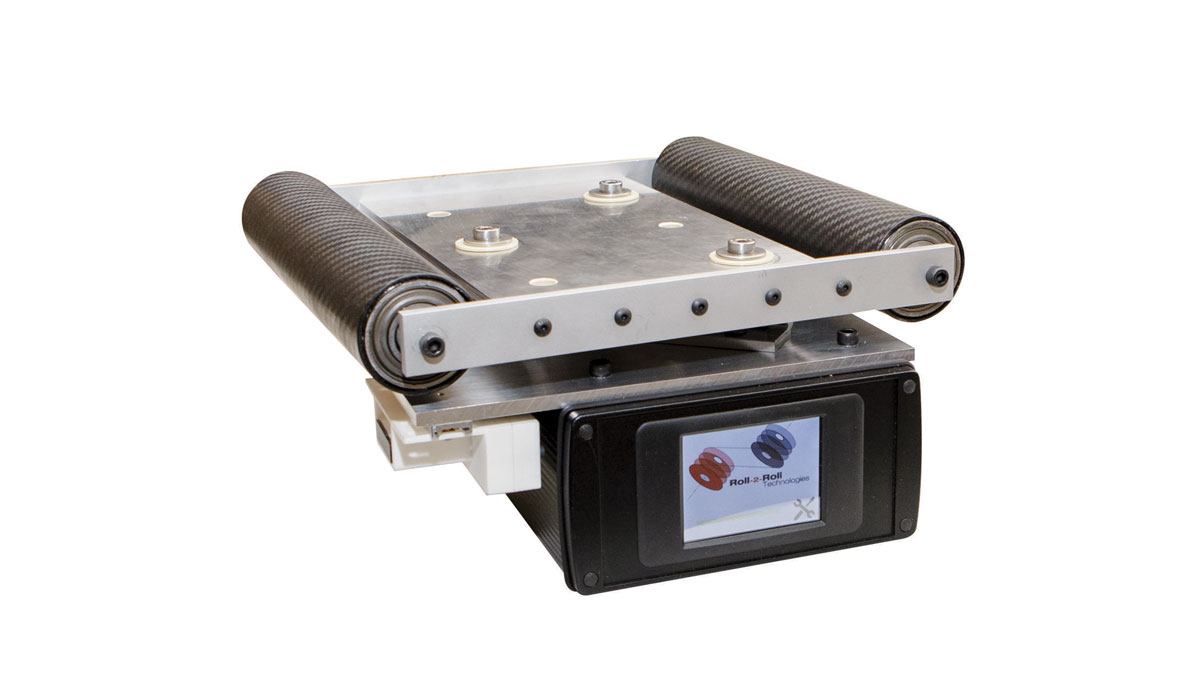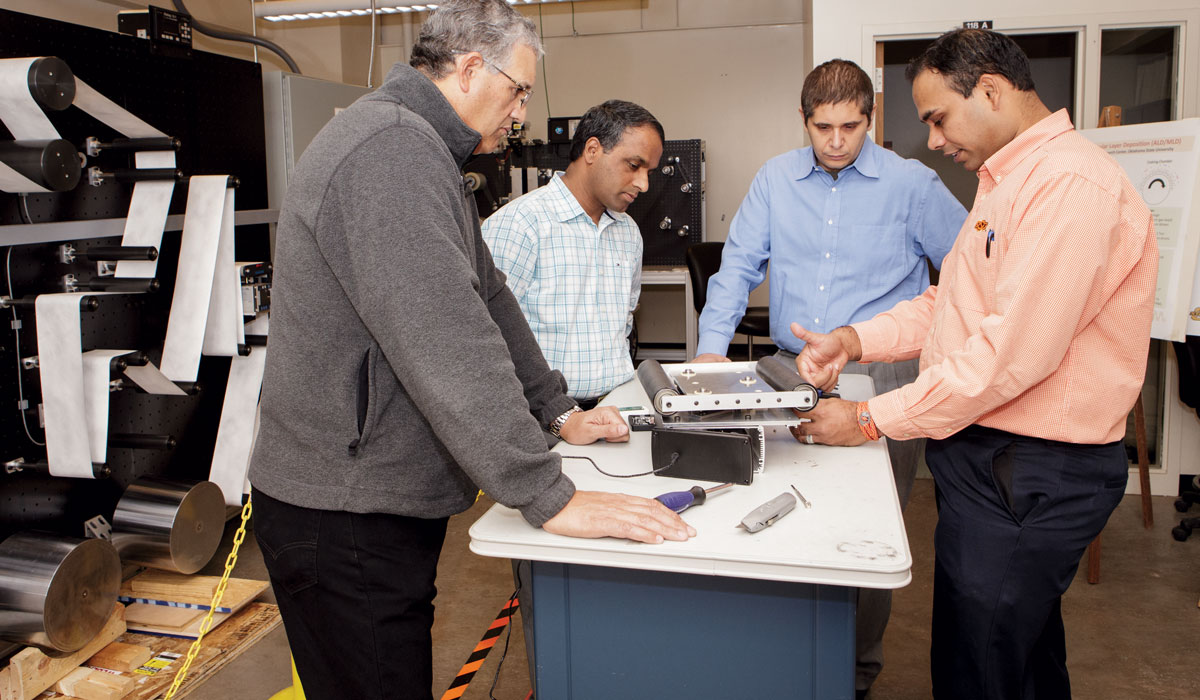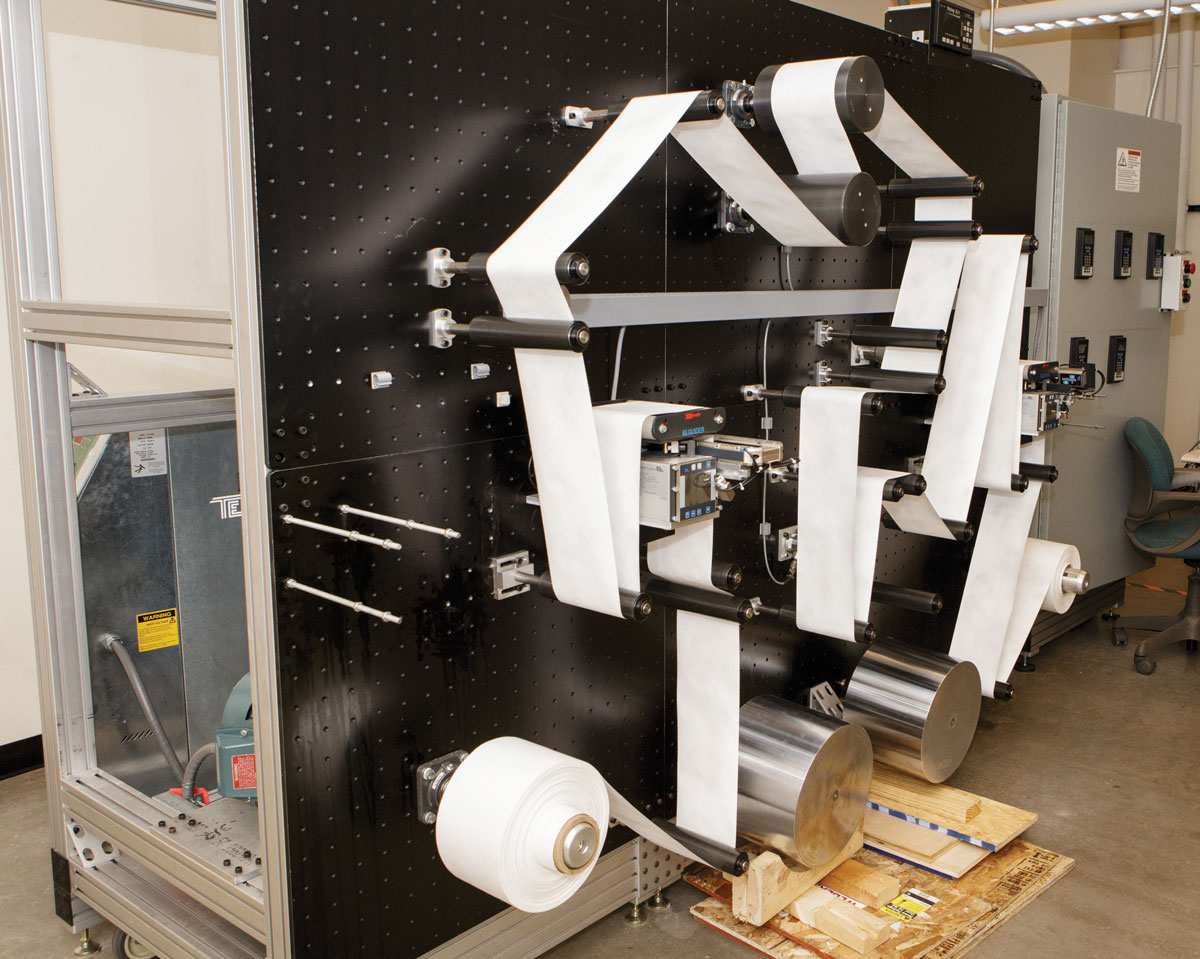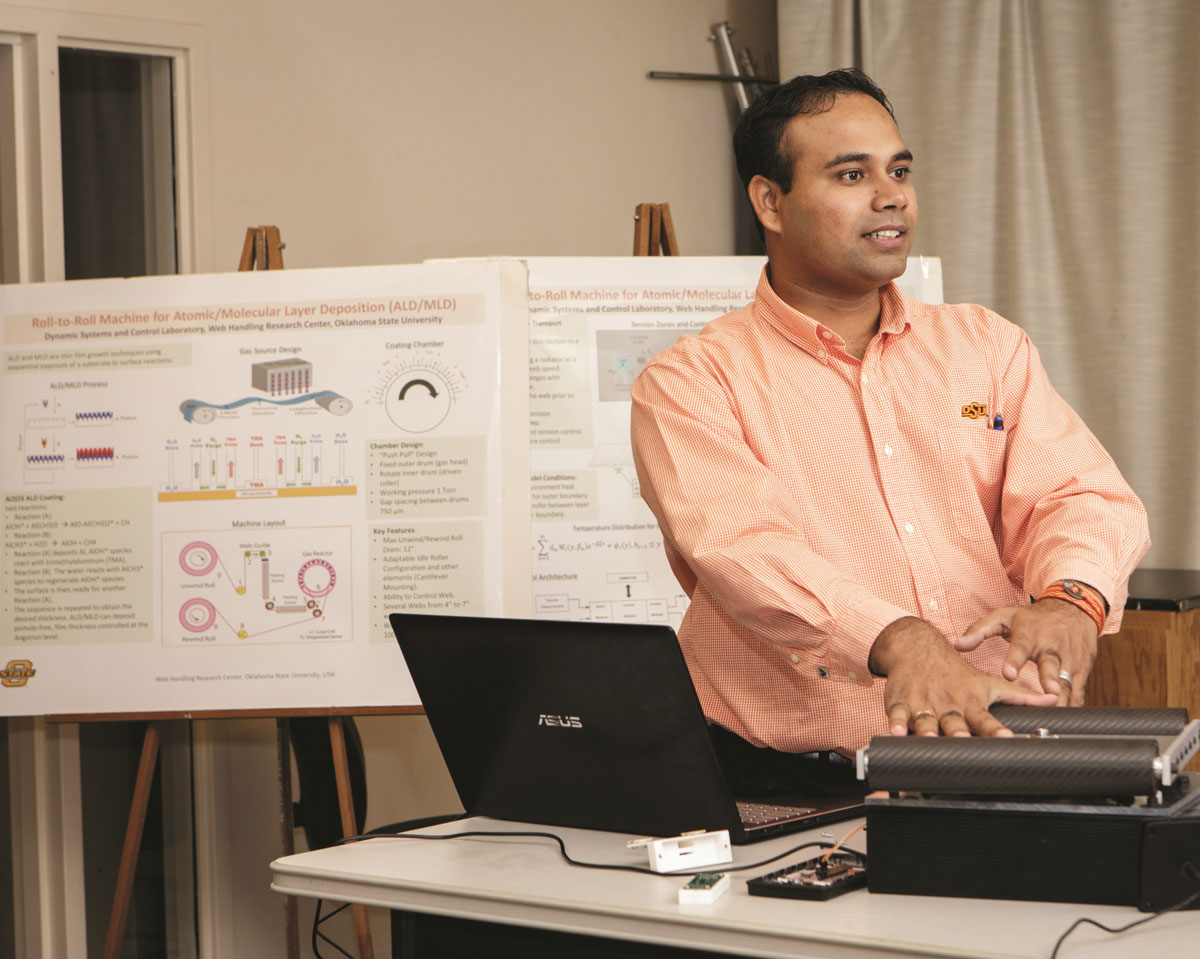Spinning Off OSU Technology as a Startup
Monday, November 9, 2015

What makes a successful entrepreneur is a topic studied as much in business schools today,including Oklahoma State University’s Spears School of Business, as pinpointing genetic mutations responsible for disease is in biomedical research. A number of traits tag entrepreneurs as likely to succeed — energy, passion, discipline, perseverance — but a key is also the ability to leverage resources and organizations to nurture a business concept to maturity.
Sparked in part by a chance class on entrepreneurship at the Spears School of Business and developed with guidance and financial support from OSU and other public and private organizations, a technology startup has become a case study for how university-developed technology can be incubated and spun off as a business. In the case of Roll-2-Roll Technologies, launched by a group of OSU graduate students and faculty, a support network of organizations helped develop a nascent technology business concept.
What began a decade ago by mechanical and aerospace engineering professor Prabhakar Pagilla to improve the handling of rolled materials in manufacturing has grown into the development of an advanced guide system for roll-to-roll machines. These machines make a variety of consumer products using such rolled materials as paper, plastic, metal, film and fabric.
“We’ve been working on this for almost 10 years,” says Pagilla. “This has been evolutionary, not revolutionary.”

Mechanical engineering student Aravind Seshadri, who came to Stillwater to earn a master’s degree, joined Pagilla’s research group to work on projects at OSU’s Web Handling Research Center, an industry partnership established to improve manufacturing using web, or roll-to-roll machines. Pagilla and Seshadri developed improved sensor and control technology for web machine lateral guides, the devices that keep materials in-line during the high-speed manufacturing process, reducing downtime for manual realignment that wastes time, material and money. Their patented fiber optic sensor and control algorithm detect the position of the web and automatically control material alignment.
“We have developed components in the device that are substantially better than what are used on existing machines,” Pagilla says.
Later, while working on his doctorate, Seshadri enrolled in a class on entrepreneurship for engineers and scientists offered by the School of Entrepreneurship at the Spears School, where he learned the basics of developing a viable business plan for a technology startup.
“I took the class out of curiosity,” Seshadri says. “I’m an engineer. I didn’t know anything about business, but I’ve always been curious to try new things.”
In 2011, Seshadri was accepted into the Creativity, Innovation, and Entrepreneurship (CIE) Scholars Program at the Riata Center, joining a team assigned to develop a business plan to commercialize the fiber optic sensor technology developed by Pagilla and his students. Though it was a good learning experience, the team decided that a business making and selling the sensor wasn’t likely to succeed.
“Our plan was to sell just the sensor, but we realized we would have to sell our sensor to somebody who makes the lateral guiding system,” says Seshadri, “but there’s no incentive for them to use our sensor over another. We hadn’t developed a good value proposition for the customer to use our sensor.”
Seshadri and his team realized that the sensor’s enhanced technology wasn’t enough.
“The technology by itself is not sufficient,” Seshadri says. “What also matters is the customer’s problem that you’re trying to solve with that technology.”

Engineers and scientists often develop great technology with a general idea of how it may benefit an industry. They then dive deep on perfecting that technology, according to Daniel Will, executive director of Cowboy Technologies, an OSU-owned company that helps university faculty and students in commercializing university technology through startup companies.
“If the voice of end-customers and decision makers is not well understood, that perfection process is for naught,” Will says. “Aravind came to deeply understand his target customers’ needs to help refine his technology-based solution with a strong value proposition.”
The entrepreneurial seed had been planted, and Seshadri and Pagilla continued improving the sensor while developing a business model based on the entire lateral guiding system rather than just a part of it.
Seshadri put together a new team, including Pagilla and fellow OSU graduate students Pedro Velasco and Carlo Branca, to develop a new business plan for a venture based on a product platform built around the lateral guide system. That team became the founders of Roll-2-Roll Technologies. In 2013, the team entered the statewide Donald W. Reynold’s Governor’s Cup business plan competition, finishing second in their division. That win qualified the Roll-2-Roll Technologies team to enter the regional Reynold’s Tri-State business plan competition, which they won. The team also won the OSU Riata Business Plan Competition.
“We didn’t have the flashiest presentations, but we had knowledge of the industry and how we were going to solve problems for our customers,” says Seshadri. “The competitions reinforced our belief that this was going to work.”
The wins opened doors and provided them with initial funding. The Roll-2-Roll team won $10,000 in prize money from the Governor’s Cup, $30,000 from the Tri-State competition and $25,000 from the Riata competition. The wins also introduced Seshadri to i2E, an Oklahoma nonprofit that mentors tech startups and receives funding from the state’s Oklahoma Center for the Advancement of Science and Technology (OCAST). The Roll-2-Roll founders further refined their business model in the 10-week i2E Proof of Concept program.
As part of the program, Seshadri and his partners contacted more than 100 potential customers, quizzing them on their needs to make sure the lateral guide technology is actually needed in the real world. Seshadri talked with an Italian company that is one of the world’s largest manufacturers of roll-to-roll diaper machines. The experience was eye-opening.
“Most manufacturers don’t develop their own technologies. They rely on others to provide them with technology,” Seshadri says. “I realized that this is an opportunity for us.”
Seshadri wants Roll-2-Roll to become the company providing technology solutions to roll-to-roll manufacturers.
“Our company is called Roll-2-Roll Technologies. It isn’t called the lateral guide company because we want to be in the business of providing intelligence for roll-to-roll machines,” Seshadri said. “The device itself, we’ll have someone make for us, but we’ll focus on the secret sauce, the algorithm that controls it.”

In parallel to the refinement of the business plan, Pagilla and Seshadri needed to fund Seshadri as an OSU postdoc to develop a full lateral guide proof of concept prototype. They turned to OSU’s Technology Development Center’s Technology Business Development Program, which provides OSU faculty with internal grants for university technology with commercial potential to advance them to the point of licensing. The TDC is also responsible for OSU intellectual property protection and licensing to companies. The TDC licensed the applicable OSU technologies to Roll-2-Roll Technologies.
With confidence building in the first proof of concept prototype and a sound business plan in place, Roll-2-Roll raised more than $520,000 of seed investment in July from Cowboy Technologies, i2E and a group of “angel” investors, individuals who provide investment capital for startups. The company founders also contributed their own money. In August, OCAST awarded Roll-2-Roll a two-year grant of nearly $300,000 that will continue to fund its technology development.
Seshadri and his co-founders incorporated Roll-2-Roll in 2013. Today, Seshadri is still the company’s only full-time employee, though other founders will soon come on as employees. He is busy developing and testing prototypes, working with suppliers and networking with prospective customers. The goal is to have the company’s prototype ready for a customer evaluation early in 2015.
Will says Roll-2-Roll Technologies continues to be on the right track. Seshadri possesses the right entrepreneurial, customer-first mindset and is fully utilizing OSU’s unique technology. He has also done an excellent job of leveraging OSU’s entrepreneurial resources to incubate technology, Will says.
“We are working to build an ecosystem of entrepreneurship through innovation at OSU,” says Will. “Cowboy Technologies, the Technology Development Center and the Spears School of Business are significant resources available to OSU students and faculty who have the ideas and the persistence to commercialize technology through successful startup businesses.”
